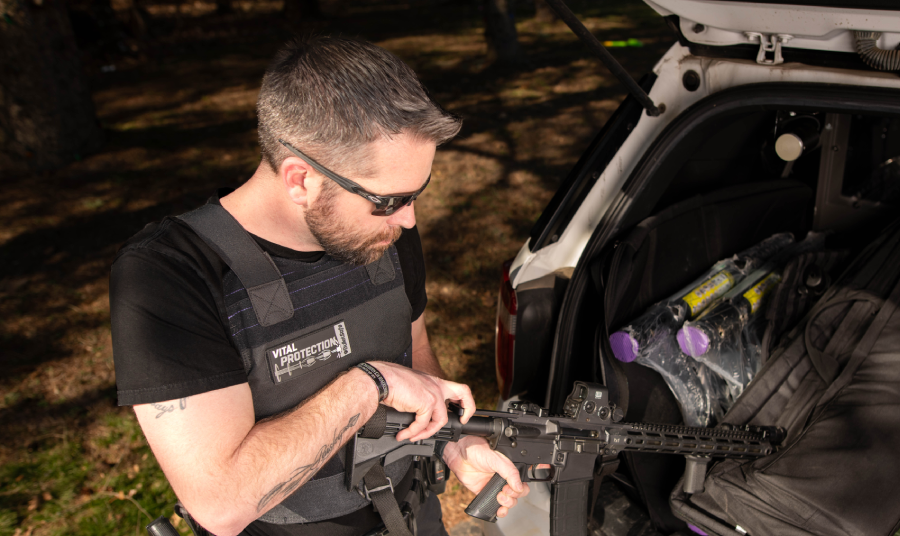A few months ago, my cousin contacted me about wanting to buy a bulletproof vest for the first time. He wanted, in his own words, to be “armored like Batman” so he would be completely protected from gun and knife fire. In other words, he wanted to be covered in as much bulletproof material as humanly possible.
To save him from future embarrassment and buyer’s remorse, I told him in no uncertain terms that his idea was stupid. For someone armored head to toe like the Juggernaut, the simple act of walking from one room to another is a light cardio workout. Running will be slower, and changing positions from prone to kneeling to standing again would be another workout by itself.
This goes without mentioning the hassle of putting on such a cumbersome piece of equipment in the dead of the night while your adversaries are bearing down on you. In a worst-case scenario, you’d have to fight hand-to-hand with someone, and a bulky heavy vest works against you in such a scenario.

An approximation of my cousin's ideal home-defense loadout. There are more practical options.
In a practical situation, one would want the lightest, least obstructive armor one could get. The military knows this, and the Department of Defense has been trying to tackle the problem for decades. Since the military introduced true bulletproof armor after phasing out the light (but not bulletproof) PASGT armor system, designers and engineers have grappled with the challenge of striking the right balance between protection and mobility for American soldiers.
The Interceptor Body Armor (IBA), introduced in the early 2000s, was an initial attempt at providing comprehensive upper body protection to the individual infantryman. However, it quickly became apparent that the IBA was simply too heavy and limited a soldier’s movement too much to be as combat effective as the military wanted to be. In response to these issues, in 2008, the Improved Outer Tactical Vest (IOTV) was introduced as its successor.
The IOTV, while an improvement, still faced criticism for the same problems of being heavy and cumbersome. Special Operations units took a different route, completely abandoning the IOTV in favor of lighter plate carriers. Furthermore, deltoid and groin protectors were rarely used since they did relatively little to save a soldier from a direct hit. While they protected fairly well against shrapnel from explosives, these accessory panels do nothing against direct hits from enemy rifle fire. Most realized the extra padding was more hindrance than help. Recognizing the need for a more agile solution, the military is now phasing out the IOTV in favor of the Modular Scalable Vest (MSV). Weighing 25lbs fully loaded, this new armor system is 5lbs lighter than its predecessor, signaling a shift towards enhanced mobility for regular troops.
Beyond the military, civilians, including security personnel and citizens who regularly wear body armor, are also seeking lighter alternatives to traditional full armor kits. Anyone who walks around with armor all day wants the same two things: protection and mobility.
One armor kit that offers the best of both worlds is the Advanced Vest with Reinforced Lightweight Advanced (RLA) Armor from BulletSafe. Crafted with a focus on comfort and mobility, RLA armor is a lighter and more flexible alternative to its predecessors. Maintaining the National Institute of Justice (NIJ) Certified IIIA protection, RLA armor is capable of defeating most pistol caliber threats, including formidable .44 magnum rounds.
Designed with the user in mind, this armor prioritizes comfort and flexibility without sacrificing protection. Its construction allows wearers to move freely, making it an ideal choice for individuals who need to be both protected and agile when they’re on the job.
The evolution of body armor reflects a fundamental shift in priorities from sheer protection to a balanced consideration of mobility and comfort. As military forces transition to lighter and more agile solutions like the MSV, civilians are also benefiting from innovations like BulletSafe’s RLA armor, which strikes a balance between protection and the freedom to move. As technology advances, the future of body armor looks promising, with continued emphasis on enhancing both safety and usability for users across various sectors.
To purchase the BulletSafe Advanced Vest with RLA Armor, click here

